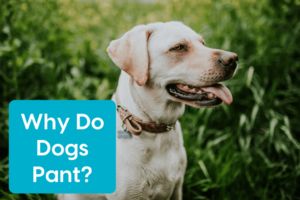

Panting is a common occurrence in dogs, but it can sometimes indicate a medical problem.
So, how can you tell if your dog’s panting means something is wrong? Here’s everything you need know about dog panting.
What Causes Dog Panting?
Here are some common reasons why dogs pant.
Heat
Panting is a common occurrence in happy, energetic dogs. Because dogs cannot sweat like humans, it assists them in cooling down.
Panting allows your dog to quickly intake, humidify, and exhale the air, increasing water evaporation from his nose and lungs. Water evaporates, cooling the body from the inside out.
When a dog pants, a considerable amount of water evaporates in a short amount of time, so always make sure your dog has plenty of fresh water on hot days.
This form of regular panting can be pretty heavy, but it should be proportional to the air temperature or the amount of activity your dog is engaged in.
Excitement
When dogs get enthusiastic, they pant as well. Panting is a common reaction to something exciting, such as meeting new people or receiving a treat. This form of panting is often accompanied by whining and can be quick and shallow.
Stress
When dogs are worried, they pant and whine in the same way they pant and whine when they are excited.
Take attention of your dog’s body language if you notice them panting. Are their pupils dilated and tired? Are they yawning and looking away? These are some of the most common signs that your panting dog is worried.
Pain
It’s crucial to understand that dog panting might signify sickness, discomfort, or pain. By performing a thorough examination and perhaps diagnostic tests, your veterinarian can determine whether your dog is panting because they are in pain.
Medicine
Even when your dog is not hot, excited, or stressed, medications, particularly prednisone or other steroids, can induce increased panting. This is a typical side effect, and you should consult your veterinarian if your dog is panting excessively.
Heatstroke
Heatstroke causes dogs to pant heavily, which can swiftly lead to dehydration and death if left untreated. Heatstroke necessitates immediate veterinary attention.
Overheated dogs pant heavily and are likely to appear uncomfortable in some way. Because they are so concentrated on cooling themselves, they may be restless, lying out flat, and/or not reacting to you.
Take frequent breaks, seek shade, and give your dog lots of water on hot summer days or while trekking and spending time outside to avoid heatstroke. Do not leave your dog outside in extreme heat or for extended periods of time. On hot days, dogs with short snouts should stay cool and hydrated since they are more susceptible to heatstroke.
NEVER leave your dog in a hot car. The interior of a car can reach scorching temperatures and threaten your dog’s life in as little as 10-15 minutes, even on mild days. Run the air conditioner or leave your friend at home when running errands.

